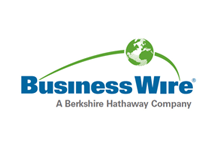Europe Wood Coatings Market Expected to Grow with a CAGR of 6.17% in Terms of Revenue & 5.60% in Terms of Volume, 2019-2027 - ResearchAndMarkets.com
The "Europe Wood Coatings Market 2019-2027" report has been added to ResearchAndMarkets.com's offering.
Market Outlook
As per this Market Research report, the Europe wood coatings markets would grow exponentially at a CAGR of 6.17% in terms of revenue in the forecast period. With regard to volume, the market is expected to grow at a CAGR of 5.60% during the forecast period of 2019-2027.
The United Kingdom, Germany, Russia, Spain, Italy, France, and the Rest of Europe together shape the overall wood coatings market in Europe.
The increasing tourism, surging employment, promotion of fair trade policies with minimal tariff, and the increase in urbanization have led to the economic growth of Europe. Moreover, the massive influx of migrants in the western European region has resulted in the demand for the construction of houses and furniture is increasing. Wood coatings are extensively used for the finishing of wooden structures since wood-based products are often susceptible to getting cracks and stains. A wood coating prevents the furniture from these damages and increases its durability. Thus, it is expected that there would be significant growth opportunities for the wood coatings market in this region.
France has the fourth-largest number of heritage sites and is one of the leading tourist destinations. This factor has led to an increase in the demand for new hotels & restaurants. The construction of hotels would require different wooden amenities to give it a modern look where wood coatings are widely used. Similarly, the Rest of European countries like the Netherlands, the Czech Republic, and Poland are the top manufacturers and exporters of wooden furniture and products. While exporting, the furniture needs to be safeguarded from various environmental conditions and chemical attacks. Hence, this factor is likely to drive the wood coatings market.
Key Topics Covered:
1. Europe Wood Coatings Market - Summary
2. Industry Outlook
2.1. Market Definition
2.2. Porter's Five Forces Model
2.2.1. Threat of New Entrants
2.2.2. Threat of Substitute
2.2.3. Bargaining Power of Buyers
2.2.4. Bargaining Power of Suppliers
2.2.5. Threat of Competitive Rivalry
2.3. Value Chain Outlook
2.4. Regulatory Outlook
2.5. Market Position Outlook
2.6. Key Insights
2.7. Market Attractiveness Index
2.8. Market Drivers
2.8.1. Rise in the Disposable Income of Consumers
2.8.2. Growth in the Construction Activities
2.9. Market Restraints
2.9.1. Rise in the Volatile Materials
2.9.2. Changing Raw Material Prices
2.10. Market Opportunities
2.10.1. Opportunities in Radiation Cure Coatings
2.10.2. Technological Advancements
2.11. Market Challenges
2.11.1. Stringent Regulations Related to the Environment
3. Wood Coatings Market Outlook - By Resin Type
3.1. Polyurethane
3.2. Nitrocellulose
3.3. Acrylics
3.4. Unsaturated Polyester
3.5. Other Resin Type
4. Wood Coatings Market Outlook - By Technology
4.1. Water-Borne
4.2. Conventional Solvent-Borne
4.3. High Solid Solvent-Borne
4.4. Powder Coating
4.5. Radiation-Cured
4.6. Other Technology
5. Wood Coatings Market Outlook - By Application
5.1. Furniture
5.2. Joinery
5.3. Flooring
5.4. Other Application
6. Wood Coatings Market - Regional Outlook
6.1. Europe
6.1.1. Country Analysis
6.1.1.1. Germany
6.1.1.2. Spain
6.1.1.3. France
6.1.1.4. the United Kingdom
6.1.1.5. Italy
6.1.1.6. Russia
6.1.1.7. Rest of Europe
7. Company Profiles
7.1. Axalta Coating Systems
7.2. Akzo Nobel N.V.
7.3. Benjamin Moore & Co.
7.4. Nippon Paint Holdings Co., Ltd.
7.5. Basf Se
7.6. Rpm International Inc.
7.7. Kapci Coatings
7.8. Eastman Chemical Company
7.9. Helios Coatings Inc
7.10. Dowdupont Inc.
7.11. Ppg Industries Inc.
7.12. the Sherwin-Williams Company
7.13. Ica Gruppen Ab (Ica)
7.14. Kansai Paint Co., Ltd.
7.15. Minwax Company
8. Research Methodology & Scope
8.1. Research Scope & Deliverables
8.1.1. Objectives of Study
8.1.2. Scope of Study
8.2. Sources of Data
8.2.1. Primary Data Sources
8.2.2. Secondary Data Sources
8.3. Research Methodology
8.3.1. Evaluation of Proposed Market
8.3.2. Identification of Data Sources
8.3.3. Assessment of Market Determinants
8.3.4. Data Collection
8.3.5. Data Validation & Analysis
For more information about this report visit https://www.researchandmarkets.com/r/9nji1k
View source version on businesswire.com: https://www.businesswire.com/news/home/20200113005587/en/



